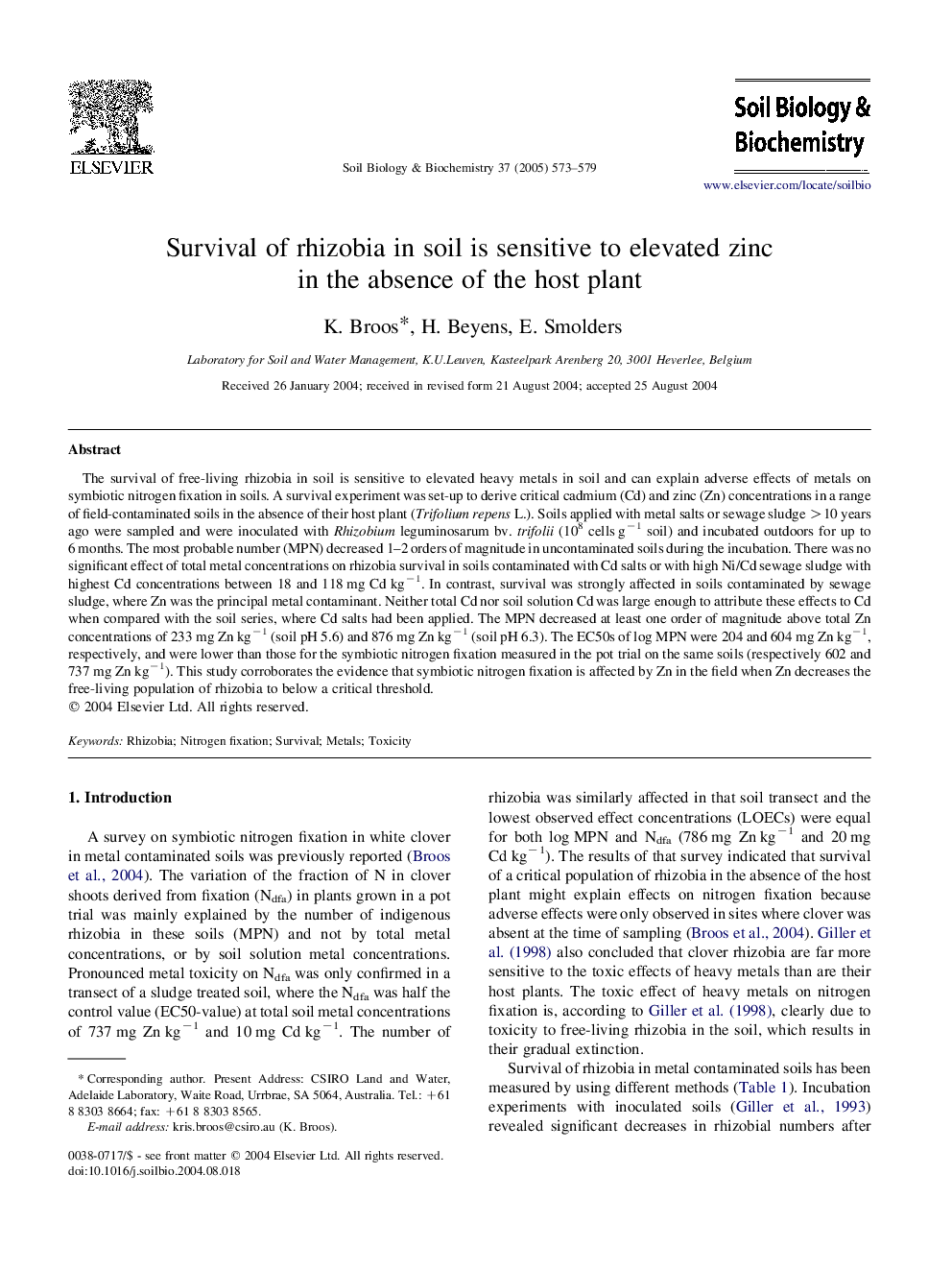| Article ID | Journal | Published Year | Pages | File Type |
|---|---|---|---|---|
| 10846476 | Soil Biology and Biochemistry | 2005 | 7 Pages |
Abstract
The survival of free-living rhizobia in soil is sensitive to elevated heavy metals in soil and can explain adverse effects of metals on symbiotic nitrogen fixation in soils. A survival experiment was set-up to derive critical cadmium (Cd) and zinc (Zn) concentrations in a range of field-contaminated soils in the absence of their host plant (Trifolium repens L.). Soils applied with metal salts or sewage sludge >10 years ago were sampled and were inoculated with Rhizobium leguminosarum bv. trifolii (108 cells gâ1 soil) and incubated outdoors for up to 6 months. The most probable number (MPN) decreased 1-2 orders of magnitude in uncontaminated soils during the incubation. There was no significant effect of total metal concentrations on rhizobia survival in soils contaminated with Cd salts or with high Ni/Cd sewage sludge with highest Cd concentrations between 18 and 118 mg Cd kgâ1. In contrast, survival was strongly affected in soils contaminated by sewage sludge, where Zn was the principal metal contaminant. Neither total Cd nor soil solution Cd was large enough to attribute these effects to Cd when compared with the soil series, where Cd salts had been applied. The MPN decreased at least one order of magnitude above total Zn concentrations of 233 mg Zn kgâ1 (soil pH 5.6) and 876 mg Zn kgâ1 (soil pH 6.3). The EC50s of log MPN were 204 and 604 mg Zn kgâ1, respectively, and were lower than those for the symbiotic nitrogen fixation measured in the pot trial on the same soils (respectively 602 and 737 mg Zn kgâ1). This study corroborates the evidence that symbiotic nitrogen fixation is affected by Zn in the field when Zn decreases the free-living population of rhizobia to below a critical threshold.
Related Topics
Life Sciences
Agricultural and Biological Sciences
Soil Science
Authors
K. Broos, H. Beyens, E. Smolders,
